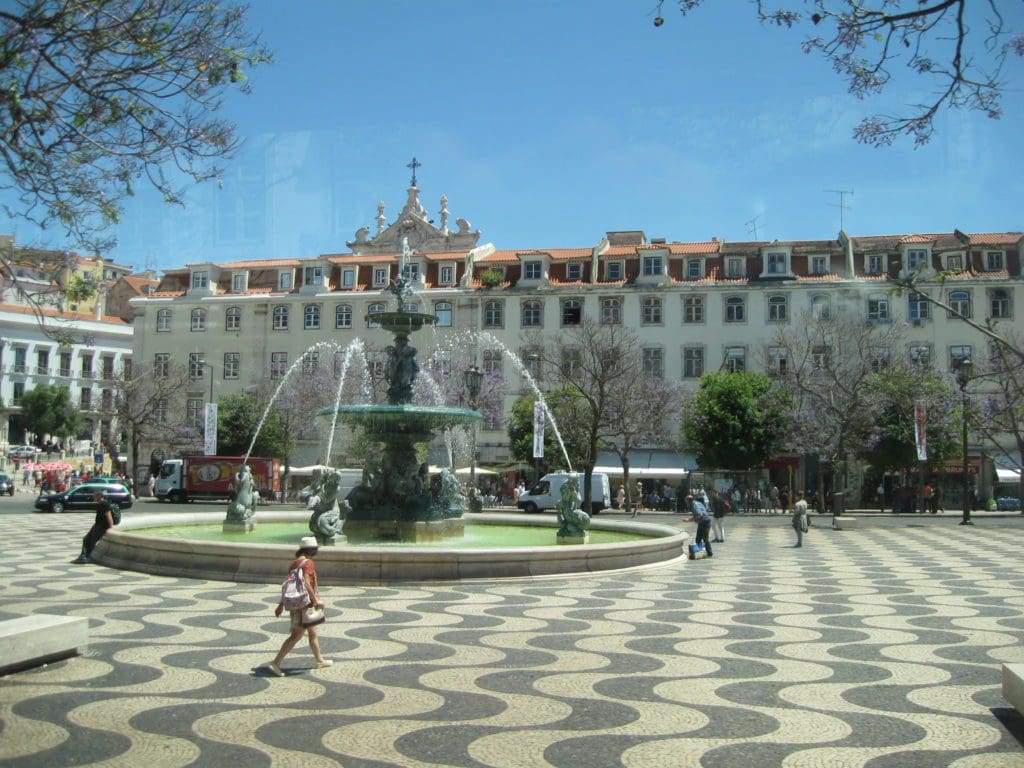 Portugal is Europe’s oldest country, clinging to the edge of the Iberian Peninsula, with a long coast and an even longer history. It has medieval hilltop towns and colorful fishing villages; remote mountains, the vine-filled Douro Valley, and sun-drenched beaches. Although the traditional music known as fado expresses the longing and sorrow of conquered cultures, modern Portugal is filled with friendly people, good food, and beautiful scenery that draws about 11 million visitors a year.
Portugal is Europe’s oldest country, clinging to the edge of the Iberian Peninsula, with a long coast and an even longer history. It has medieval hilltop towns and colorful fishing villages; remote mountains, the vine-filled Douro Valley, and sun-drenched beaches. Although the traditional music known as fado expresses the longing and sorrow of conquered cultures, modern Portugal is filled with friendly people, good food, and beautiful scenery that draws about 11 million visitors a year.
Stefanie Cox, Assistant Operations Manager at Covington, recently traveled to Portugal on an educational trip to experience its old-world European culture first-hand. Her report follows.
Lisbon, the Capital City of Portugal
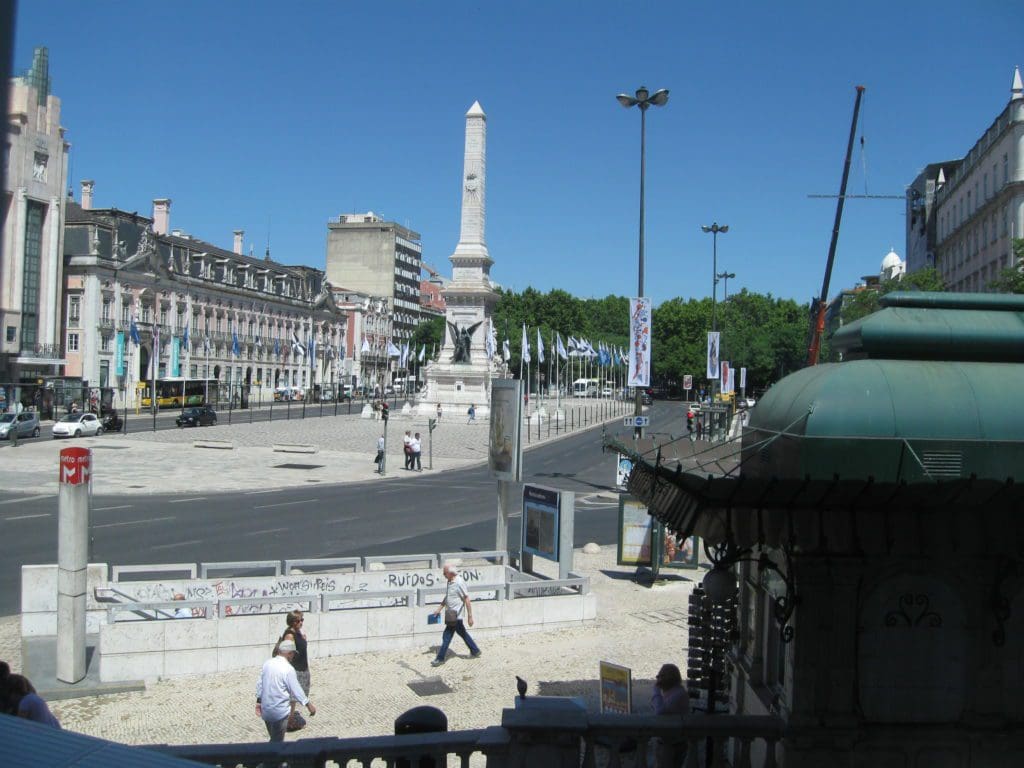
Flying to Portugal was a pleasure using direct, non-stop service on United from Washington Dulles to Lisbon. The Lisbon airport is very close to the capital city, so it’s a short ride into downtown. We stayed at the Altis Avenida Hotel, a contemporary boutique hotel in a classic 1950s building located right in the heart of Lisbon. It offers easy access to the city’s cultural sites and nightlife, and it serves breakfast daily on the rooftop terrace.
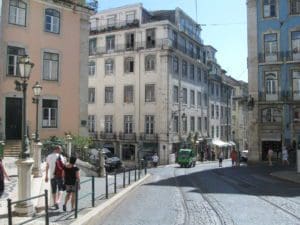 Lisbon is relatively small in size, so many tourist spots are within walking distance of hotels. Don’t miss these favorite historical sites:
Lisbon is relatively small in size, so many tourist spots are within walking distance of hotels. Don’t miss these favorite historical sites:
- Views of Lisbon from Castelo de Sao Jorge hovering above the city
- The elaborate tombs of Vasco da Gama and various royalty at the UNESCO cited Mosteiro dos Jeronimos
- Se Cathedral that dates from 1147, but incorporates remains from Roman times
- Torre de Belem, built in 1514 as a lighthouse and defense against pirates, also UNESCO cited
We didn’t have much free time for shopping, but during the time we had, I felt the prices seemed right on target.
Stefanie’s tip: Portugal is one of the top five safest countries in Europe. You do, however, have to watch out for pickpockets. Never hang your purse on the back of your chair at a café!
Day Trip from Lisbon to Sintra
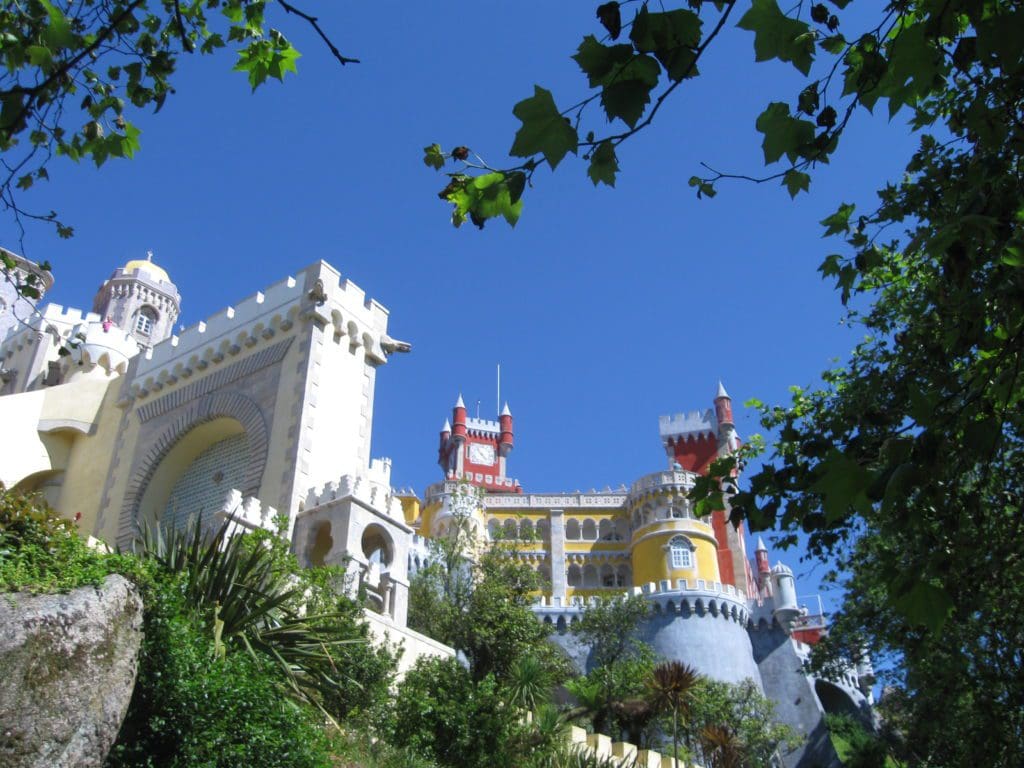
The small UNESCO classified hill town of Sintra is about a 20-30 minute drive from Lisbon. There is also regular train service if you don’t have a car. Sintra is the quintessential small European village – picturesque with castles, palaces, stately homes and formal gardens scattered throughout.
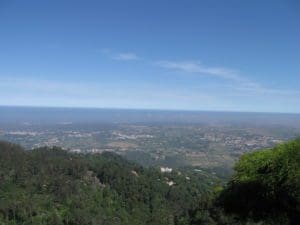
The huge Palacio Nacional de Sintra (royal palace) in the center of town is renowned for its superb azulejos, the painted, tin-glazed ceramic tiles. The whimsical Palacio da Pena atop a rocky hillside was built as a private playground for Queen Maria II in the 19th century. The crazy mixture of Gothic, Arabic and Renaissance architecture is a sight to see, as is its view.
After a walking tour of the cobblestoned streets of Sintra, our adorable and very knowledgeable guide escorted us to a horse drawn carriage which took us from the city center to the Palacio d Seteais Hotel for a lovely and relaxing lunch. This resort a 13th-century castle hotel – elegantly decorated with rich tapestries and artistic frescos. And you could spend hours wandering the lush garden mazes. Stefanie’s tip: The carriage ride was a fun extra touch that Covington travel designers can arrange so you, too, can arrive in royal style!
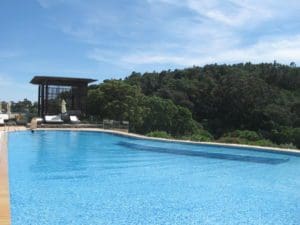
We also inspected the 5-star Ritz-Carlton luxury resort, Penha Longa, which dates to the 14th century. The palazzo-style estate is between Sintra and Lisbon among rolling hills and mountain lakes. Elegant accommodations, championship golf, fine dining and a sublime spa await its lucky guests. The pool there is incredibly beautiful!
Stefanie’s tip: Both of these Sintra hotels are excellent places to relax and luxuriate at the end of an active trip. Currently, neither offer shuttles to Sintra or Lisbon, so you’ll either need a car or be happy staying put and savoring the resorts’ indulgences.
Day Trip to Coastal Cascais
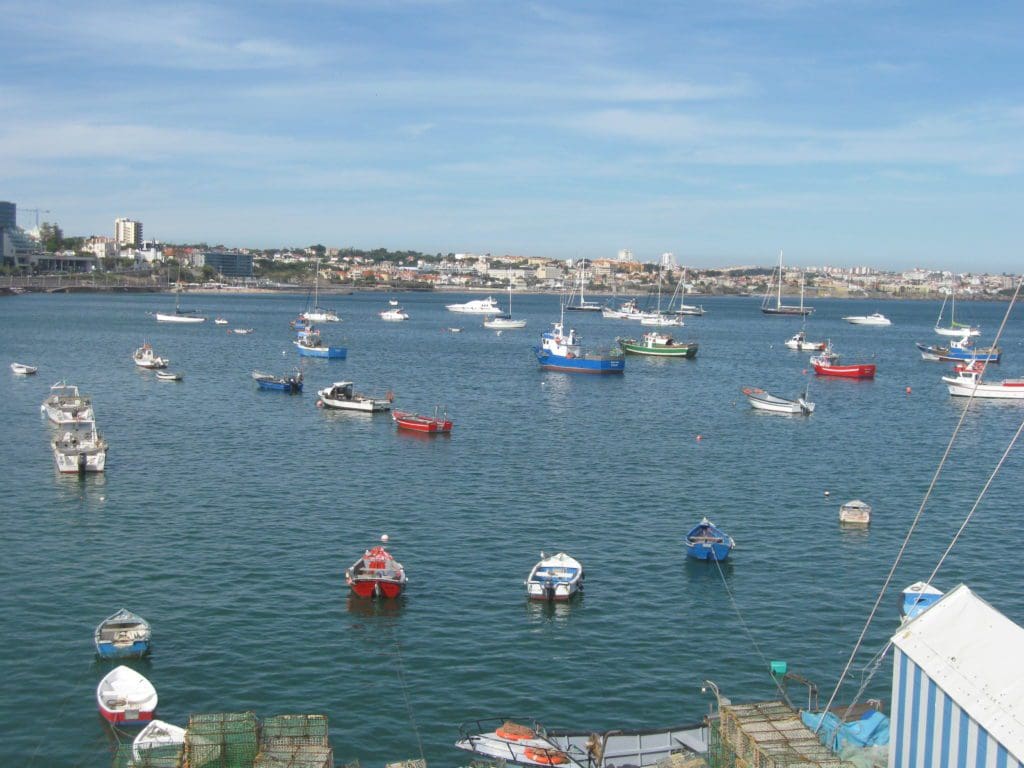
Another easy day trip from Lisbon is to Cascais, known as the Town of Kings and Fishermen. It was always a fishing town, but in the 19th century, King Fernando declared Cascais his favorite summer retreat. The wealthy followed the nobility to the fishing village, giving it a prosperous and sophisticated atmosphere that continues to present day. Golden sandy beaches, pedestrian streets flanked by shops and cafes, and a large casino that inspired Ian Fleming’s James Bond character greet visitors.
Stefanie’s tip: Don’t drive in Portugal unless you absolutely have to. The otherwise friendly Portuguese get crazy behind the wheel. The winding road connecting Cascais to Lisbon is one of the most dangerous in Europe. Instead, a scenic train ride along the coast will take you there in 30-45 minutes without mishap.
My educational trip was but a taste of this beautiful country. There’s still much more of Portugal for me to see. When I left, I felt a touch of saudade (a feeling of longing for something that is gone but might return). So I think I must return!
To experience the historic charm of Portugal yourself, contact the vacation advisors at Covington Travel to plan your trip.
All photo credit: Stefanie Cox







Leave a Reply